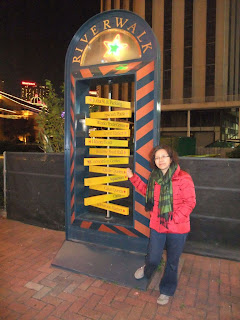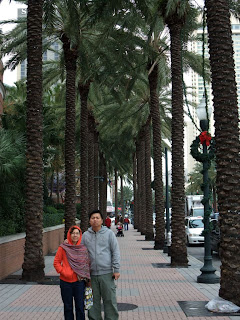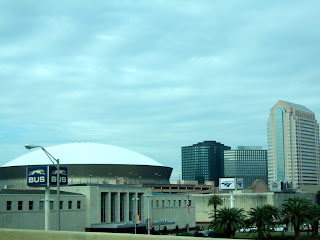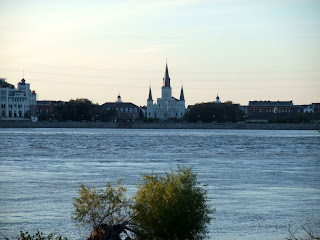
The city of New Orleans is one of the world's most fascinating cities, steeped in a history of influences from Europe, Caribbean, Africa and beyond. It is known for a host of attributes like its Creole food, abundant alcohol, music of many styles, the 18th and 19th century architecture, antique, gay pride plus the nearby swamps and plantations. It is a brilliant mosaic of culture, food and music. You will find brimming bowls of Gumbo, late night in jazz clubs, stroll through historic neighborhoods and tantalizing festivals throughout year. City of New Orleans is basically divided into seven main parts including (1) French Quarter (2) Central Business District (3) Downriver (4) Uptown, (5) Mid-city (6) Lake side and (7) Algiers.


Uptown is the 19th residential neighborhoods upriver from Central Business District, developed during 19th century when New Orleans was one of the fastest growing cities in The States.


The concentration and variety of intact 19th to 20th century building structures make it a treat for those who enjoy the architecture of those era, and a frequent setting for movie scenes.



Starting from River Walk Site at the edge of French Quarter, there are street cars running along the main streets all the way through uptown to Tulane University and Carrollton.



Majority of this historic section of the city escaped the great flood induced by Hurricane Katina in 2005 with a notable exception at Freret Street which had been a 1900 neighborhood commercial street at uptown being declined for a generation. The street was flooded chest deep in 2005 flood. By 2011 while a few parts are still on the ragged side, the 8 block stretch of Freret is now hopping with new innovative local restaurants, shops, cafes, comedy club and monthly market. It was one of the success stories of New Orleans's rebirth.



The innovative signboard at River side lawn where a tooth representing dentistry, a house representing real estate and druggist are represented by a mortar with a pestle.



Hotel and restaurant at Fulton Street as if a party celebration.



Palace Cafe is one of the city best local restaurants at St Charles Avenue. They offer classic authentic French cuisines. The most convenient way to visit this area and go around the city is by street cars or buses. Car parking is very very expensive normally at US$27.00 a day or 7 dollars an hour ranging from different period of time.







Magazine Street is a commercial hub with bus line.



Elegant palm trees line up the walkway with trunks winding up with colored bulbs, lighting the walkway in lights at night, turning it into a romantic walkway for couple.




New Orleans has long had a reputation as an adult orientated city but there are also many attractions for people who are interested in culture and arts, for families with children.



Besides the famous festivals, New Orleans also hosts smaller fests and gatherings like the walkaton for parents and kids at uptown district.



"Come on, son" Father and son in the walkaton.


In New Orleans, you may want to ride a Harley Bike, a Vespa Scooter, a bicycle or toy-car like those young girls. Every thing is available and every one has their own way to enjoy.



Palm is the most common at New Orleans and they look good at most areas.




Excessive decoration with huge Christmas tree at one of the modern shopping mall along the uptown street.



New Orleans in fog at morning hours.




Buses are most useful transport route run through shopping corridor at uptown, passing by Magazine St which hosts some 80 blocs of antique stores, art galleries, interior design studios, clothing stores.



A great contrast in architecture !


Lighthouse for the blind was erected in year 1923



New Orleans is a city with majority Roman Catholic population owing to its European origins. Surprising, we observed there is a Buddhist Zen Temple stands adjacent to St Patrick's Church.



Part of Canal Street.



Lafayette Square - Statue of Henry Clay was erected in 1856 on Canal Street at the intersection of Royal and St. Charles Street and was removed to Lafayette Square in 1900



Warehouse and arts district.




There are many museums and arts center near Central Business District.





Central Business District has many high rise hotels.



There are also some excellent restaurants around Central Business District.


The Super Dome at Central Business District.




Lake Pontchartrain Causeway with a length of more than 38 km is the longest bridge (over water) in the world as recorded in Guinness Record. It joins Metairie, a suburb of New Orleans, at southern end, to Mandeville at northern end. The Causeway was completed in 1969 costing a total sum of 56.7 millions of dollars.


The Bridge was supported by over 9000 concrete pilings and consists of two parallel bridges. The two bridges feature bascule spans over the 13 km navigation channel, south of north shore. The Causeway never sustained any major damage of any sort due to natural occurrences which is very rare in all bridges. During Hurricane Katrina 2005, damage was only found on the unused turnaround on the older south span, while the structural foundations remain intact.



Lake Pontchartrain located in southern Louisiana, is the 2nd largest saltwater body of water in USA. It is not really a true lake but an estuary connecting via Rigolets Straits to Gulf of Mexico. It covers an area of 1600 sq.meter with a depth of 12-14 feet. It is oval in shape with 64km from east to west and 39km from north to south.



Gorgeous architecture with distinctive designed windows around Lake Pontchartrain. Generally it is unknown to visitors as they are mostly newer parts of the town.




Eastern New Orleans covers a large area of this section. The place has restaurants, historic forts, impressive art deco, 20th century architecture and a smattering of other attractions like a Vietnamese Village.




Campus of University of New Orleans are along the lake side.


The office of Federal Bureau of Investigation does not look really thrilling compared to the name of FBI.


The opening of causeway boosted the fortunes of small North Shore communities by reducing driving time into New Orleans to nearly an hour, and bringing North Shore into the city's metropolitan area.


Lake Pontchartrain Causeway is a toll bridge costing each car a US$3.00 both way collecting only on North shore.


Viewing the vast horizon of sky at Lake Pontchartrain.


Crossing Lake Pontchartrain Causeway.


Sun started setting.



While enjoying crossing over Lake Pontchartrain, do not forget to admire changes of sky, in color and in shape.




Crossing the longest bridge in the world under the stunning sunset spectacle.


The golden sunset dyed up the whole sky of West Esplanade Avenue.


Down River site.


The Mississippi River.



Canal Street Ferry are free for all pedestrians to cross over Mississippi River to Algiers.


City skyline and Canal Street Ferry wharf at dusk


Luxury Cruise Lines anchored at Mississippi River cruise station and the cargo vessel sailing across the River was from Singapore, a 10,000 miles journey!




St. Louis Cathedral at Jackson Square is at the other side of Mississippi River.




Algiers across Mississippi River is also part of New Orleans.



Louis Armstrong born in 1901 was the 1st important jazz soloist. He became the most influencing and renowned American musician of 20th century.




The old statehouse and some 19th century buildings at the historic old Algiers Point Neighborhood.



The beautiful skyline of New Orleans in evening.



Fanbourg Treme is one of the oldest neighborhood in the city and was the main neighborhood of free people of color in the city's early history.


Fanbourg Treme remains an important center of the city's African-American and Creole culture.


The colorfully painted long wooden houses at Fanbourg Treme. They are quite similar to those natives houses in most of South East Asian countries like Malaysia and Indonesia.


The notorious Lower 9th ward at Down River was one of the worst hit in 2005 Katrina disaster.


Some of the spot was still in ragged condition after the attack of hurricane Katrina 2005.


There are some unexpected historic sites at Downriver area.


Setting a small store in front of their home, selling fruits, food or local produce is way of earning a living too!



To avoid flood, layers of tall soil levee were built behind all these big homes and their farm at upper 9th ward at Down River side.


Oil Refinery.



Where to go and how to go? This big screen, located at the front desk of the hotel where we stayed provided updating weather situation and accurate directions in ways to go. Our next destination would be City Park at Mid-City to visit The Museum of Arts.


No comments:
Post a Comment